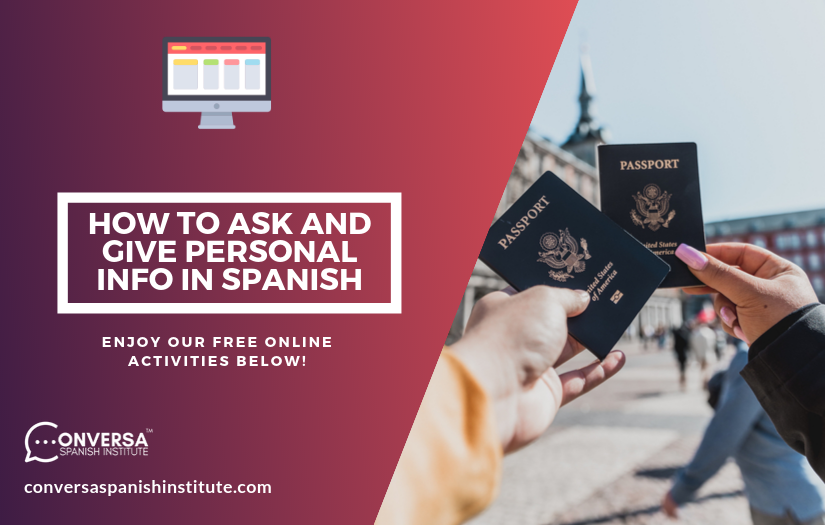- [email protected]
- +34 961258767
- Av. del Marqués de Sotelo 3, Floor 2, Door 4, 46002 Valencia
Menú

When in a new environment, it’s of ultimate importance that you know how to answer questions about personal data. We hope you never find yourself in an emergency, but even under normal circumstances, you’ll need to understand what you’re being asked.
Are you maybe moving to a Spanish-speaking country? Or maybe just doing a bit of travelling, perhaps? Whatever the situation may be, if you’re going abroad, you need to be prepared to answer questions on personal information. So if you want to learn Spanish online, we got you covered. Without further ado, let’s go about some common questions and answers. They’ll come in handy, I promise.
Here’s a phrase that you will probably hear a lot: “¿Cuál es tu _____?” which translates to “what’s your _____?” To this structure you can add name, last name, age, address, etc., to ask almost anything your heart desires.
This formula is very useful and you can use it whenever it’s your turn to make questions. Unfortunately, it’s not the only way this information can be sought, as it happens in any language. That’s why we have a second list of questions you may hear somebody ask you:
Now that you know what the questions may be, read these ready-made answers specially for you (and anyone, really):
Remember, you don’t need to know all these by heart. There may also be many more questions on personal data that we have not covered. However, familiarize yourself with as many phrases as you can so that you’re never caught by surprise.
And now you’re free to go on holiday, on a scholarship abroad, or on to a new life without fearing the otherwise-very-scary paperwork! Spanish bureaucracy is just about as terrifying as everywhere else…
Practice is a great way to learn, but anybody who wants to learn Spanish also needs a strong foundation to start from.
| Cookie | Duración | Descripción |
|---|---|---|
| cookielawinfo-checkbox-analytics | 11 months | This cookie is set by GDPR Cookie Consent plugin. The cookie is used to store the user consent for the cookies in the category "Analytics". |
| cookielawinfo-checkbox-functional | 11 months | The cookie is set by GDPR cookie consent to record the user consent for the cookies in the category "Functional". |
| cookielawinfo-checkbox-necessary | 11 months | This cookie is set by GDPR Cookie Consent plugin. The cookies is used to store the user consent for the cookies in the category "Necessary". |
| cookielawinfo-checkbox-others | 11 months | This cookie is set by GDPR Cookie Consent plugin. The cookie is used to store the user consent for the cookies in the category "Other. |
| cookielawinfo-checkbox-performance | 11 months | This cookie is set by GDPR Cookie Consent plugin. The cookie is used to store the user consent for the cookies in the category "Performance". |
| viewed_cookie_policy | 11 months | The cookie is set by the GDPR Cookie Consent plugin and is used to store whether or not user has consented to the use of cookies. It does not store any personal data. |